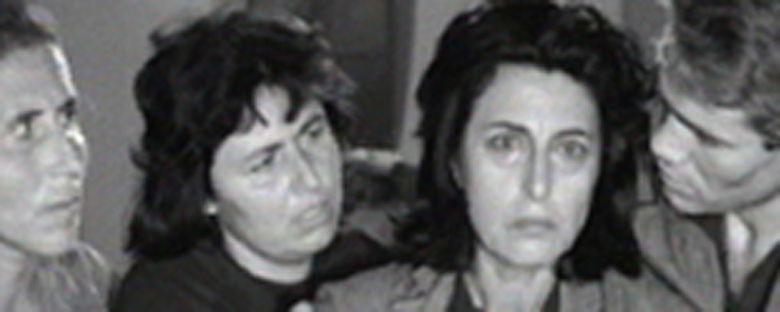Reviews
Pier Paolo Pasolini
Italy, 1962
Credits
Review by Rumsey Taylor
Posted on 11 July 2004
Source The Criterion Collection DVD
Related articles
Features: The Final Films of Pier Paolo Pasolini
There is an inclination to scrutinize Mamma Roma. An early film of a director whose work would be routinely prosecuted and freely associated with Italian neorealism, Mamma Roma does not seem to honor either account. It possesses the sentimentality and undernourished scenarios of neorealism, yet is told with juvenile humor and dated obscenity. Pier Paolo Pasolini’s later films are visually elaborate literary adaptations, and Mamma Roma — his second film — has accurately rendered characters and settings. Watching this film with knowledge of both its director’s work as well as its parent association, one has the task of placing Mamma Roma in the more appropriate context.
Retrospection, however, will not properly catalogue this film. Mamma Roma is a fundamentally neorealist work only in comparison to Pasolini’s films. Within the movement, as with Pasolini’s debut Accatonne, it is dissimilar. Similarly, Mamma Roma’s lack of embellishment in setting and context is contrary in comparison to the effort Pasolini displays in his later films to fashion elaborate and fantastic scenarios. Mamma Roma is dilemmatic. Singularly, it is a great film.
Mamma Roma is unique in Pasolini’s canon as it contains his most uncharacteristic casting choice: Anna Magnani in the title role. She was one of Italy’s most prominent actresses at the time, a future Oscar winner and familiar character in neorealist films (foremost in Roberto Rossellini’s Open City). Given her renown at the time Mamma Roma was shot, she is dissimilar to the character she plays. Pasolini frequents unprofessional actors (in an interview reprinted in the Criterion booklet, he claims: “I choose actors for what they are and not for what they pretend to be”), and has cited his mistake in casting Magnani.
This account of disappointment aside, Magnani is a domineering presence in this film. In the opening scene, as a guest at a wedding banquet, she is drunk and wild, the source of an entire crowd’s laughter. It is clear in her rants that she is obscuring a deep despair. She is a former prostitute, and the groom a former — and younger — lover.
This is a story of Mamma Roma’s desired redemption. She is reunited with her son, Ettore, a product of her former employment, which she wishes to withhold from him. She is able to work legitimately, and begins taking Mass. Her influence upon her son, however, is not as resolute. He wanders with his friends in the same slums as she did, and risks the same temptations and strife. Ettore is pursued by an older woman, and it is with distress that Mamma Roma recognizes her youth in her son’s.
Mamma Roma is similar to Fellini’s La Strada in its sparing exhibit of its director’s aesthetic trademarks (Nights of Cabiria would be the more apt thematic comparison). Specifically, the film contains one of Pasolini’s many explicit reconstructions of a classic painting. Mantegna’s Dead Christ is referenced when Ettore is captured by the police and restrained on a bed. The scene is designed to inherit the source’s implication; to allegorize Ettore’s suffering. Pasolini makes it explicitly clear that Ettore is a martyr for a larger social ill neither he nor Mamma Roma is capable of transcending.
Mamma Roma is not the transition that is The Gospel According to St. Matthew (which is possibly Pasolini’s most distinguished film), yet it is an indication of Pasolini’s direction away from neorealism and towards epic allegories. Because it is sublime, and because the confrontation of many of Pasolini’s films can be an intimidation, it is among the controversial director’s best films.
We don’t do comments anymore, but you may contact us here or find us on Twitter or Facebook.



